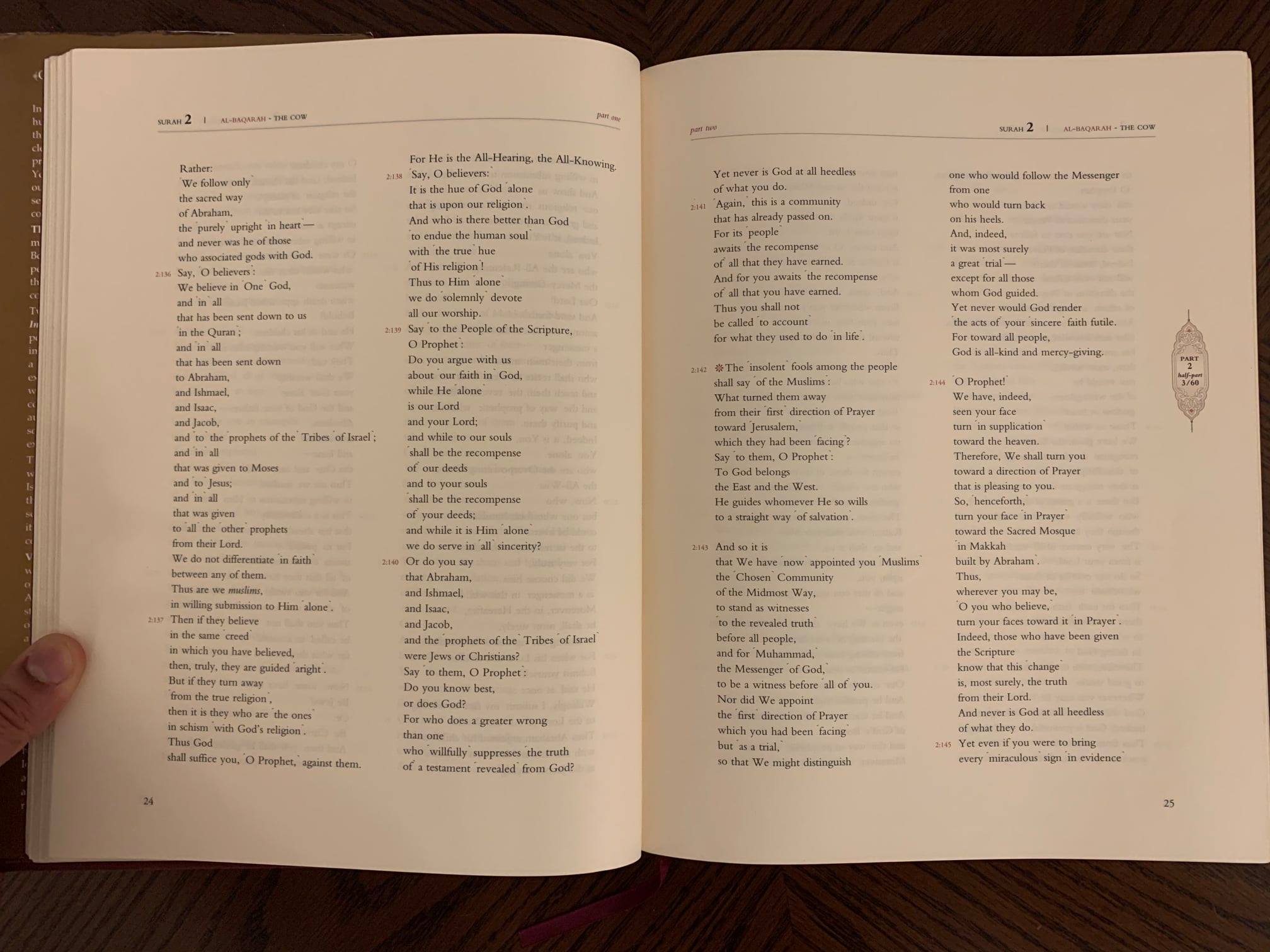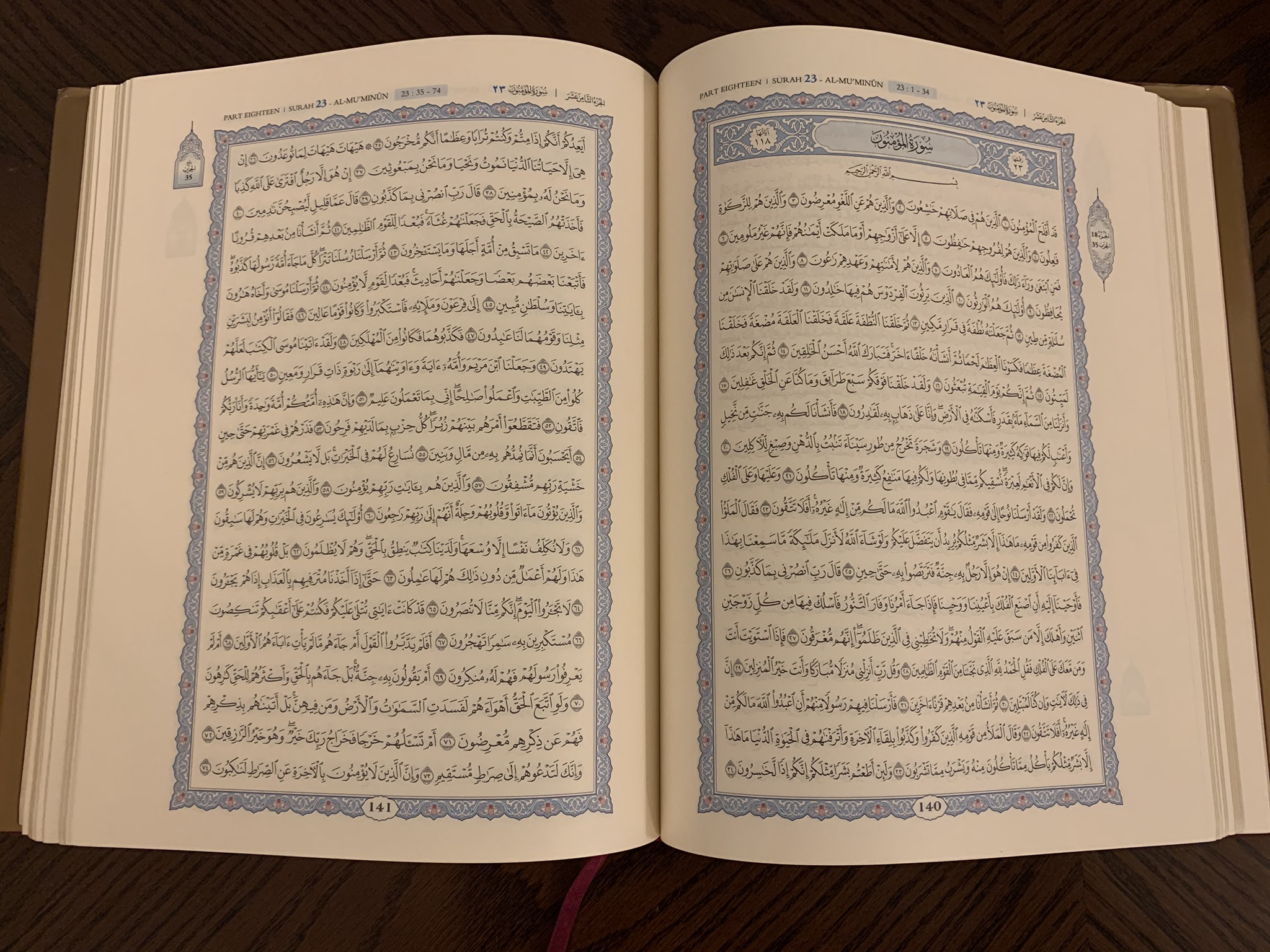We noted previously that official efforts by Egypt’s religious establishment – represented by Al-Azhar University – have been eclipsed by translations by men associated with the institution. Today’s post concerns one of those.
The 1st edition (2007) of “The Gracious Quran: A modern-phrased interpretation in English” is particularly fine, in two volumes: one with the translation and indices, the other with the Arabic text, English essays and annotations.
Ahmad Zaki Hammad was trained at Al-Azhar and later became professor in Qur’an, Hadith and Shari’ah at its Faculty of Languages & Translation. He lived 25 years in the USA, served in Islamic organisations, and completed his PhD at the University of Chicago on al-Ghazālī’s work on legal principles, “al-Mustaṣfā” (translation and study). He has several other published books including studies of specific Quranic chapters which were released before he completed his major translation.
Vol. 1 opens with short introductions. Hammad states that this translation is based on “fourteen centuries of continuous Quran scholarship”; it provides context so the text may be understood as educated Arabs do; and balances clear language with “a sense of reverence and beauty”.
The Annotated Contents are an unusual touch which provides a reason each surah has its name. The translation itself is laid out in 4 columns per double-page, in phrase-lines resembling poetry, and breaks between passages. Glosses are marked by half-brackets. The volume also has a General Index and four specialised indices, on God; His attributes and actions; “Prophets, Messengers and Mary (peace be upon her)”; and animals, insects and plants. These in themselves can be added to the genre of the Qur’an Index.
Vol. 2 opens (from the left) with reviews by major Azhari scholars Yusuf al-Qaradawi, Ali Gomaa and Muhammad Abu Laylah (the latter a senior figure in the Faculty of Languages). A recurrent theme is the fact that the translator has combined knowledge of “East and West”. Hammad then explains that these are intended to be followed by 4 further volumes of “commentary, scholarly notes, precepts and practice, vocabulary reference, thematic concordance and indices”. Then comes a set of chapters introducing the Qur’an and its features. Notable are the sections on the history of Qur’an translation, in which Hammad offers his own assessments, then outlines his own training and explains his sources and approach in considerable detail. He notes that he reworked an earlier version completed in 1999.
The same chapters are then provided in Arabic. If you open Vol. 2 from the right, it has a different set of reviews in Arabic, then a tailored 250-page muṣḥaf (Qur’an layout) without translation. The middle 200 pages of Vol. 2 are notes (sometimes short essays) pertaining to specific verses. Making use of them properly would require placing the two volumes side by side. The 2nd edition (2008) is smaller, with parallel Arabic-English text, but naturally less content than the 1st.
Ahmad Zaki Hammad’s rendition of the Qur’an displays a high level of expertise and attention to detail, including in its layout and aesthetics. The translation itself deserves wider attention, and the supplementary material is worthy of close study.


